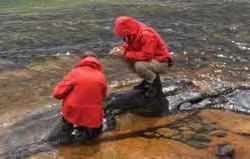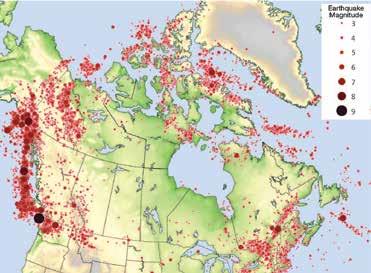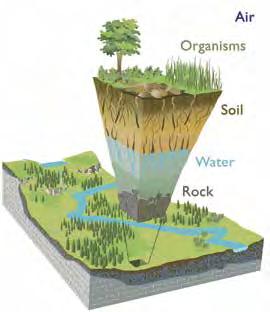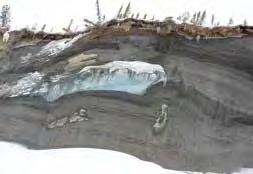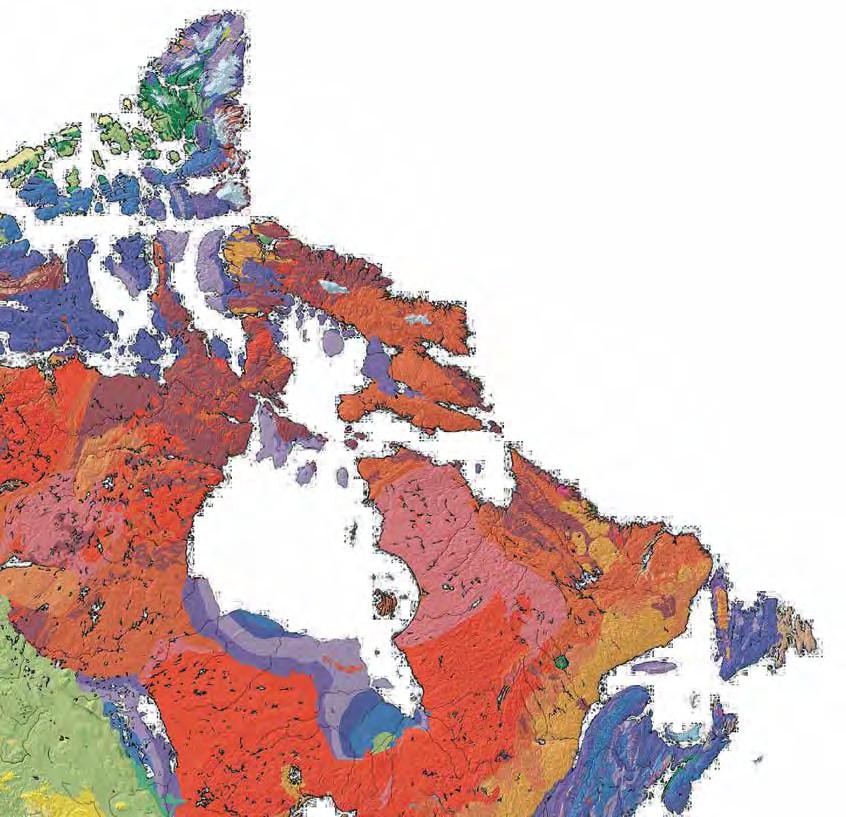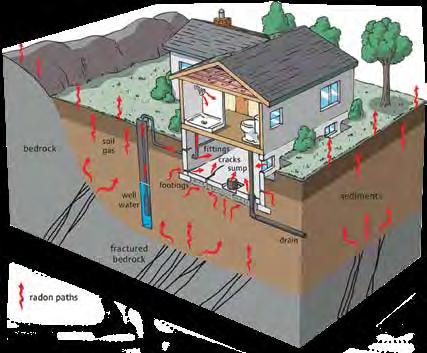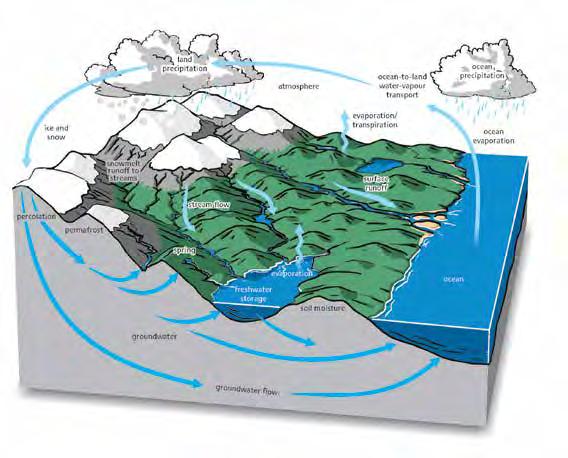GEOSCIENCE, ENVIRONMENT, AND THE ECONOMY Geoscientists work across a range of disciplines to serve the needs of society. By working together with other scientists, geoscientists help to provide a complete picture of environmental issues to help decision-makers keep Canadian people, wildlife, culture, and landscapes safe and healthy, in balance with the strong economy needed to support a thriving society.
DID YOU KNOW
that Canada’s Earth observation satellites provide essential information on ocean, ice, land environments, and the atmosphere. Geoscientists interpret images captured by satellites to monitor and protect the environment, manage resources, and ensure the safety and security of Canadians.
Most people think of environmental issues only in terms of their biological and chemical components. However, the interaction between humans and the environment also has an important geoscience component. Consider how processes such as weather systems, surface drainage, coastal erosion, and deposition, or even the location of natural geological features affect the environment – addressing all of these requires an understanding of the relationship between the underlying geology and ecosystems. Glaciologists, geochemists, hydrogeologists, geomorphologists, soil scientists, and inland water scientists (limnologists) all address environmental issues. Geoscience expertise and information are required by government departments, regulatory bodies, and industry to make sound, sustainable, and informed decisions with full knowledge of potential consequences to the natural environment. Canada’s wetlands, rivers, and coasts are changing because of natural processes and accelerated change resulting from human activity. Environmental geoscientists collect data about these changes, interpret the results, and communicate the likely environmental consequences.
NASA/Chris Hadfield/ Wikimedia Commons
6
GEOSCIENTISTS AND THE CRITICAL ZONE The Critical Zone is the Earth’s near-surface environment where soil, rock, water, air, and living organisms interact, influencing the availability of life-sustaining resources. In the Critical Zone, a series of physical, chemical, biological, and human processes and reactions occur including recirculation of chemicals, water storage, and the movement of contaminants. Geoscientists play an important role in the understanding and management of the Critical Zone, including conducting scientific research on the role of geochemical processes, developing plans to manage water
J. Chorover/ Wikimedia Commons
resources and mitigate groundwater pollution, and informing government policies that protect the natural cleansing capacity that this key zone provides. CONTAMINATED SITES Environmental geoscientists conduct environmental site assessments, remedial action planning, risk assessments, and monitoring and compliance testing of contaminated sites. They provide critical knowledge and advice to decision-makers and the public on the potential environmental impacts of a wide variety of commercial, industrial, and recreational activities in both urban and remote areas. Environmental geoscientists also have the challenging role of cleaning up sites where the soil, groundwater, and sub-surface have been contaminated by past commercial or industrial activities. Their role is to identify contaminated soil and water and ensure that it is all removed to be treated off-site, or that it is treated in situ by applying sub-surface treatment technologies to remove the contaminants.
GEOSCIENCE AND CANADA UNDERSTANDING OUR EARTH: THE VITAL ROLE OF CANADA’S GEOSCIENTISTS


